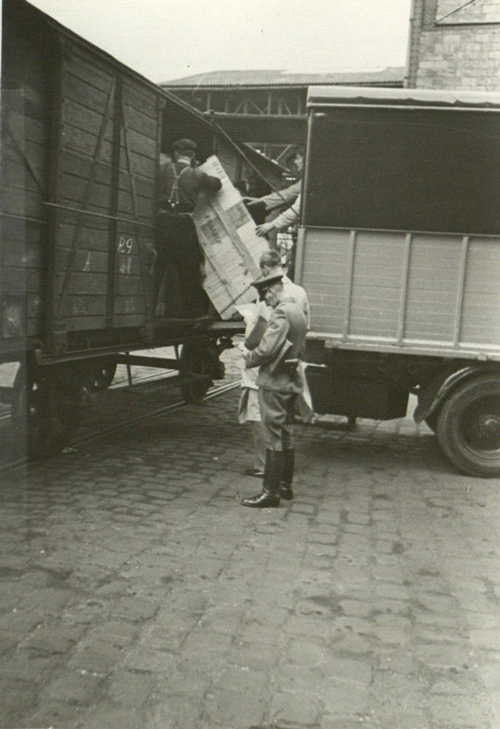Nazi ideologue Alfred Rosenberg created the Einsatzstab Reichsleiter Rosenberg as a special military unit devoted to the Third Reich's project of systematically seizing art objects from Jewish families, gallerists, and dealers. Now the plunderer's own meticulous records, which catalogue the works he helped loot, are being used to aid in the ongoing process of returning those pieces to their rightful owners. A new online database that documents art seized in occupied France and Belgium between 1940 and 1944 -- based on Rosenberg's files, as well as records from the U.S. National Archives and the German Bundesarchiv -- is allowing the persecuted and their heirs to search for stolen works that have been missing for more than half a century.

Two workers sliding a crate of looted objects down a wooden ramp for transfer to Lager Peter on June 12, 1944 in Neuschwanstein, Germany. / Courtesy Einsatzstab Reichsleiter Rosenberg
The free online service, which officially launched today, lists more than 20,000 art objects, including over 80 Picassos, almost 20 Monets, and numerous pieces by Vermeer, Rembrandt, Leonardo, and many more. The database was set up by the New York-based Conference of Jewish Material Claims Against Germany and the United States Holocaust Memorial Museum. Many of the works were identified by documents drawn up by Rosenberg's squad when looted works were processed at the Jeu de Paume building in Paris's Tuileries Gardens, from which the spoils were distributed among top Nazi officials (including Hitler) or sold.
While the database will no doubt facilitate the return of many art objects to their rightful owners, the Claims Conference estimates that thousands of the more than 650,000 works that were seized during the war are still missing. The chairman of the conference, Julius Berman, told the BBC that, following the introduction of the Database of Art Objects at the Jeu de Paume, it is "now the responsibility of museums, art dealers, and auction houses to check their holdings against these records to determine whether they might be in possession of art stolen from Holocaust victims."
Visit ARTINFO to learn more about Nazi restitution claims, including details on a notorious case involving Egon Schiele's "Portrait of Wally," a suit brought against Hungary for allegedly holding more than 40 works of art stolen during World War II, and how a legislative bill in California could alter the restitution of Nazi-looted art.
- ARTINFO
Follow ARTINFO on Foursquare: http://foursquare.com/artinfo